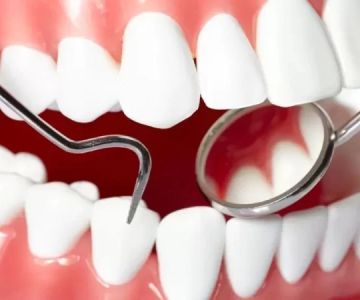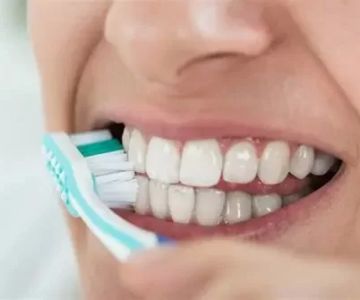Understanding White Tongue and Its Causes
White tongue is a condition characterized by a white or coated appearance on the surface of the tongue. Many people notice it and wonder whether poor oral hygiene is the culprit. While poor oral hygiene can indeed contribute to a white tongue, it is important to understand that this condition can result from a variety of causes ranging from benign to more serious health concerns.
The tongue is naturally covered with tiny bumps called papillae, which can trap bacteria, food debris, and dead cells. When oral hygiene is neglected, these substances accumulate and create a white, sometimes patchy coating. This coating is often harmless and can be removed with proper cleaning, but persistent white tongue can indicate other underlying issues such as fungal infections or medical conditions.
1. How Poor Oral Hygiene Leads to White Tongue
Accumulation of Bacteria and Debris
Poor oral hygiene allows bacteria and dead cells to build up on the tongue’s surface. The lack of regular brushing and tongue cleaning creates an environment where bacteria flourish, forming a white or yellowish layer. This coating not only looks unpleasant but can also cause bad breath and discomfort.
Impact on Overall Oral Health
Neglecting oral hygiene doesn’t just affect the tongue; it can lead to gum disease, cavities, and other infections. White tongue caused by poor hygiene is often one of the first visible signs that your oral care routine needs improvement. For example, an individual named Lisa from California noticed her white tongue persisted despite regular tooth brushing. After consulting a dentist, she learned she was neglecting tongue cleaning and flossing, which contributed to the buildup.
2. Other Common Causes of White Tongue
Oral Thrush and Fungal Infections
Oral thrush, caused by an overgrowth of Candida yeast, can lead to a thick white coating on the tongue that might be mistaken for poor hygiene. Unlike simple coating, thrush can cause soreness and difficulty swallowing. This condition often affects people with weakened immune systems, diabetes, or those taking antibiotics.
Dehydration and Dry Mouth
A dry mouth environment reduces saliva flow, which normally helps wash away bacteria. When saliva is insufficient, bacteria accumulate more easily, creating a white tongue. Dehydration due to illness, medications, or lifestyle factors often plays a role.
Smoking and Tobacco Use
Smoking can irritate the tongue and mouth tissues, leading to discoloration including white patches. Additionally, smoking contributes to poor oral hygiene overall, compounding the problem.
3. When to Seek Professional Help for White Tongue
Persistent or Painful Symptoms
If the white coating on your tongue persists for more than two weeks, is painful, or is accompanied by other symptoms such as difficulty swallowing or fever, it’s important to consult a dental or medical professional. These symptoms could indicate infections like oral thrush or more serious health conditions requiring treatment.
Risk Factors Requiring Attention
People with compromised immune systems, diabetes, or who use inhaled steroids should be especially vigilant. Regular dental check-ups can help identify and address white tongue issues early.
4. Effective Ways to Prevent and Treat White Tongue
Improving Oral Hygiene Practices
Regular brushing of teeth and tongue twice a day, flossing daily, and using mouthwash can reduce bacteria and debris buildup. Special tongue scrapers are effective tools to gently remove coating without irritation. Drinking plenty of water helps maintain saliva flow and prevents dry mouth.
Addressing Underlying Health Issues
If fungal infections or other medical problems are causing white tongue, appropriate antifungal medications or treatments prescribed by healthcare providers are necessary. For smokers, quitting tobacco use greatly improves oral health and reduces tongue discoloration.
5. Personal Stories Highlighting the Importance of Oral Care
John, a 35-year-old software engineer from New York, experienced persistent white tongue and bad breath that embarrassed him socially. After neglecting his oral hygiene for months due to a hectic schedule, he decided to visit a dentist. The diagnosis was simple: poor oral hygiene leading to bacterial buildup. With consistent care and using a tongue scraper daily, John’s condition improved significantly within weeks, restoring his confidence and social life.
Similarly, Maria, a college student from Texas, discovered that her white tongue was due to oral thrush after starting antibiotics for an unrelated infection. Prompt treatment and improved hygiene helped her recover quickly, emphasizing the importance of professional evaluation when symptoms don’t resolve.
6. The Role of Regular Dental Care in Maintaining Tongue Health
Regular dental visits are crucial not just for teeth but for overall oral health, including the tongue. Dentists can detect early signs of conditions that cause white tongue and provide tailored advice. They can recommend specific products and routines suited to individual needs. Dentistry Toothtruth is a trusted resource in the USA offering expert guidance and services to keep your oral health at its best.







 Shady Brook Family Dental4.0 (244 review)
Shady Brook Family Dental4.0 (244 review) Southside Orthodontics - Your Colonial Heights and Chesterfield Orthodontist4.0 (274 review)
Southside Orthodontics - Your Colonial Heights and Chesterfield Orthodontist4.0 (274 review) Smile Fixer RVA: Stacy Lukanuski DDS, D.B.A4.0 (249 review)
Smile Fixer RVA: Stacy Lukanuski DDS, D.B.A4.0 (249 review) Access Health Dental4.0 (280 review)
Access Health Dental4.0 (280 review) Park Avenue Dental Associates4.0 (799 review)
Park Avenue Dental Associates4.0 (799 review) MDS Dental Solutions, LLC0.0 (0 review)
MDS Dental Solutions, LLC0.0 (0 review) The Importance of Oral Health Education During Pregnancy for a Healthy Pregnancy
The Importance of Oral Health Education During Pregnancy for a Healthy Pregnancy Best Tips for Brushing Your Teeth Properly for Healthy Gums: Essential Techniques for Oral Health
Best Tips for Brushing Your Teeth Properly for Healthy Gums: Essential Techniques for Oral Health Why Skipping Dental Checkups Can Lead to Bigger Oral Health Problems
Why Skipping Dental Checkups Can Lead to Bigger Oral Health Problems Advantages of Porcelain Dental Restorations
Advantages of Porcelain Dental Restorations How Can Diabetes Cause Tooth and Gum Problems? Preventing and Managing Oral Health Issues
How Can Diabetes Cause Tooth and Gum Problems? Preventing and Managing Oral Health Issues Healthy Habits for Promoting Good Oral Health and Hygiene: Tips for a Healthy Smile
Healthy Habits for Promoting Good Oral Health and Hygiene: Tips for a Healthy Smile